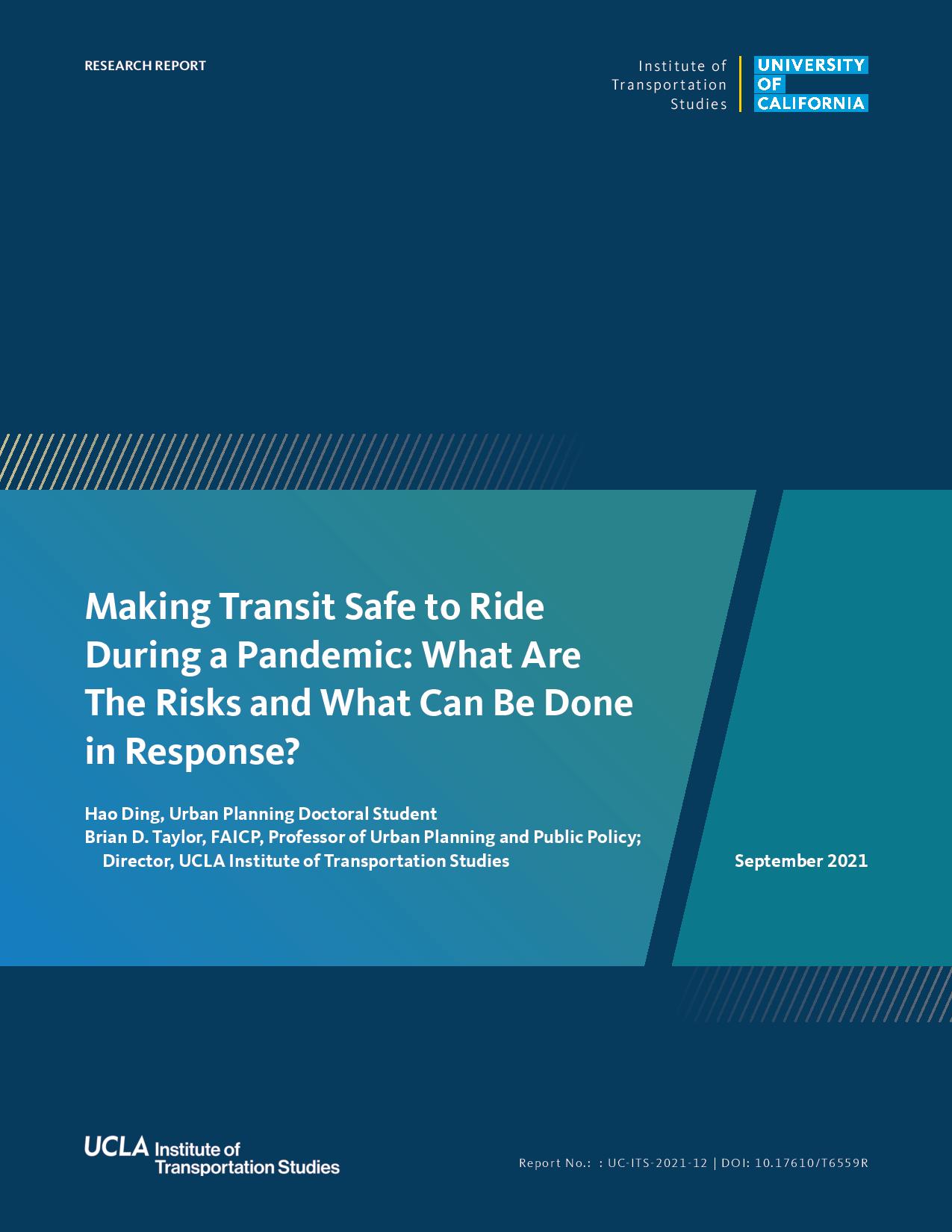Date: October 8, 2021
Author(s): Hao Ding, Brian D. Taylor
Abstract
The Covid-19 pandemic dramatically curtailed travel in the spring of 2020 and more moderately in the months that followed. Travel on public transport declined more and remains lower than on other travel modes, such as driving, biking, and walking. Although public transit operators have implemented various measures to reduce the risk of infection for both riders and employees, fear that public transport poses a high risk for transmission of the infectious disease is widespread. Since the onset of the Covid-19 pandemic, debates have raged in the popular and academic literatures regarding the safety of public transit systems and the role they may play in spreading the disease. To inform this debate, we review the public health literature on the spread of communicable diseases on public transport and conclude that current debates over public transit safety with regard to infection risk have tended to simplify a complex question that depends on numerous factors, many of which are well beyond the control of public transit operators. We draw on published studies of previous epidemics and the current pandemic to show that 1) there is a risk of infection on public transport, but the relative magnitude of the risk is often lower than in many other settings including households, workplace, schools, restaurants, and hospitals; 2) both the broader public health response and public transit agency actions can meaningfully reduce the risks of transmission; and 3) public transport (and indeed all travel modes), by moving people from one place to another, can facilitate the geographical propagation of infections, which can be effectively limited by travel restrictions. We highlight the multitude of risk factors that can affect infection risk on public transport, and argue that public transit systems can be made safe by actions taken by individual riders, public transit operators and, most important, by community-wide public health responses.
About the Project
The global COVID-19 pandemic has shocked many economic and social systems. One of the most profoundly affected has been the public transit systems that serve cities large and small. Ridership initially plummeted, service has been cut, and in some cases slashed, and public health concerns are many, and finances are increasingly tight on public transit systems around the globe, in the U.S., and here in California. To understand how public transit is evolving in the pandemic, UCLA Institute of Transportation Studies researchers have looked into what transit service is changing, how it is changing, why it is changing, and for whom it is changing. The project has also examined how well the changes made affect the spread of COVID-19, and how transit can continue to safely serve the mobility needs of essential workers during the pandemic.


